Expensive Reality of UK FTTP on Demand Broadband Hits Home
Customers who last year delayed ordering one of Openreach’s (BT) up to 1000Mbps capable FTTP on Demand (FoD) ultrafast broadband products, perhaps in the hope that the new UK wholesale ISP costs might result in a price cut, have been left surprised by the large build quotes.
The FoD or FTTPoD service is designed to be requested (‘on demand‘) in slower FTTC capable areas where Openreach’s pure fibre optic cables usually only go so far as your local street cabinet. Essentially it enables you to get an ultrafast Fibre-to-the-Premises (FTTP) line built right to your property (e.g. business or home), even if FTTP wasn’t planned for the area, albeit with the customer having to pay the significant build costs involved.
It’s important to point out that FoD is a completely different ball game to a native FTTP deployment. In a native rollout Openreach cover the cost of deploying their fibre directly to your property as part of their self-funded or state aid supported rollout and then the property owner only needs to pay a small setup fee to get connected (i.e. they don’t have to cover the civil engineering costs).
The issue of FoD pricing has always been a contentious one due to the high costs involved with building such a network and the fact that it’s targeted more at businesses (SME) than homes, although residential people with very deep pockets could still order it; Openreach’s previous price hike in May 2014 appeared to put the service increasingly out of reach as an option for domestic use (here).
Today very few ISPs offer the service (e.g. Cerberus Networks, Syscomm, Amvia, Specrum Internet [South Wales] and FluidOne), not least because it sits so close to leased line / Ethernet pricing and yet lacks some of the advantages of those products. The 36 month contract terms were also a turn-off for some.
The New Model (2018)
Openreach’s decision to overhaul FoD pricing at the end of 2017 generated a rush of optimism (here) by introducing cheaper rentals and connection fees, as well as a 12 month contract term, support for faster FTTP tiers and withdrawal of the distance-based charging method (no more cost per metre approach). The latter was replaced by a FoD build charge that would be established through a planning/survey phase.
In addition, Openreach pledged to reduce the estimated build charge for any additional premises that would be passed by its deployment (especially if those premises agreed to aggregate their orders to help bring the overall deployment cost down). Suffice to say that the initial reactions were positive and many people liked the simplified approach.
Any quotes would naturally still be subject to survey, with Openreach providing an initial, non-binding estimate of the level of build costs. Upon confirmation by the ISP, they would then proceed with the planning phase, and establish a final firm price which is valid for a period of 30 days. At this stage, if the ISP did not want to proceed then it is liable to pay the survey and design fee of £245.14.
At the time we warned that there was still a big question mark over the new build charge, which also made it harder for people to do their own estimate of potential costs. Similarly the idea of aggregating multiple orders to help bring the cost down tends to be easy to propose but rather more complex for people to implement themselves (if doing this for homes then a Community Fibre Partnership might be better).
Revised Quotes Head Skywards
The new pricing was finally introduced on 1st February 2018 (details) and many of those who had delayed their orders from last year (i.e. to see how it would impact their costs – both on the build and in terms of much lower rental) were suddenly given a shock. Over the past month we’ve received a number of emails about this and TBB’s Forum also carries some public examples.
Example Old vs New Build Costs (Estimated)
OLD: £2,000.00 +vat [Band B] in Merseyside
NEW: £9,800.00OLD: £1,800 [Band B] in Brighton
NEW: £13,000+OLD: £2,750
NEW: £18,100OLD: £7,675 [Band G]
NEW: £13,700NOTE: Only a Site Survey can determine if there may be any additional ECC’s (Excess Construction Charges) above the old charge band model. Likewise the cost under the new system might go up or down depending upon whether the customer chooses to proceed and take a full engineering survey (i.e. the first desktop survey is only a VERY rough estimate).
At the time of writing we haven’t seen anybody with an install quote of more than around £39K and it’s also very important to factor in the impact of cheaper service rental, which isn’t depicted above. For example, prior to the change FluidOne would charge a little over £300 +vat per month for one of their FoD tiers and after the change this dropped to about £100 (a sizeable saving when you also consider the old 36 vs 12 month terms).
However the rental drop is less dramatic with other ISPs. For example, Cerberus went from around £165 to £100 on the same tier (a big difference but nothing like the drop seen at FluidOne). On top of that the quotes included how many premises would be passed by FTTP as part of the FoD build, which added a cost reduction and if any of those premises joined the order (aggregating) then each would attract a £700 discount.
A Spokesperson for Cerberus Networks said:
“As people could only see the published Openreach pricing for the fixed price elements, the variable build charges were still an open question at the time of the announcement and resulted in people only looking at the recurring costs. This has perhaps given people an erroneous impression that the service was going to be significantly cheaper.
Although the overall build prices have increased, we do see considerable benefit for customers being able to group orders together and share costs. This is something that wasn’t possible under the previous system. With the forthcoming expansion of the DCMS Gigabit Voucher Scheme, for which FoD is a qualifying service, we also see considerable scope for businesses to be able to pool their funding to build out FTTP infrastructure and access ultrafast broadband rather than use the scheme to subsidise expensive leased line services.
We have taken orders under the new system and look forward to comparing the initial build estimates with the confirmed costs once the surveys take place. Where customers are seeing estimated build costs that don’t match their understanding of the local network infrastructure, we would encourage them to place an order to trigger a full Openreach survey. Desk surveys are conducted from network records and, in some cases, may not reflect recent changes.”
A few of those receiving the new quotes have also expressed surprise for other reasons. In a couple of cases people claimed that the cost should be far lower as they believed the local fibre aggregation node was only 200-300 metres from their property. Unfortunately ISPs can’t check this unless the customer proceeds to take a full survey at cost. Some people may also be confusing FTTC cabinets with agg nodes.
For it’s part Openreach informed us that it was always going to be the case that if they made rentals very cheap (like FTTP) and embed a discount (£700) on the build charge upfront, then the build charge would need to cover what was a distance based charge + higher rentals + ECCs (excess construction charge) from before.
A spokesperson for Openreach told ISPreview.co.uk:
“We do have some work to do on getting the estimates to be closer to the expected quote, as there are a number of situations where we know this generates high estimates. As a rule, above a certain limit, we no longer report the estimate as we believe a survey is needed.
The reality is that volumes have been stable on FOD for now – although it’s still early days as a cycle on FoD is long.”
We’ve long felt that Openreach may have underestimated the original costs for delivering FoD and their initial change in 2014 seemed to be an attempt to fix that. The latest refresh could perhaps be considered part of the same issue, albeit one that is very much rebalancing the costs around a simplified and more flexible model.
In theory the cheaper rental, Gigabit voucher support and 12 month contract term should eventually make up for the hefty installation costs (after 12 months customers could switch to an even cheaper FTTP ISP), although the question of how long you’d have to wait for those costs to balance out vs the old model will obviously depend upon the size of your revised build quote.
Naturally a huge build cost will always run the risk of discouraging adopters or perhaps even redirecting them back toward the realm of high capacity Ethernet leased lines, depending upon your requirements. Openreach would of course be more than happy to sell you a higher quality Ethernet connection.
In the meantime FoD continues to remain an extremely niche product and a strong reminder that building commercial fibre optic networks, on-demand or not, is rarely cheap.
Mark is a professional technology writer, IT consultant and computer engineer from Dorset (England), he also founded ISPreview in 1999 and enjoys analysing the latest telecoms and broadband developments. Find me on X (Twitter), Mastodon, Facebook and Linkedin.
« Government Mulls Regional Franchises to Boost Full Fibre Broadband
Latest UK ISP News
- FTTP (5684)
- BT (3557)
- Politics (2591)
- Openreach (2336)
- Business (2313)
- Building Digital UK (2269)
- FTTC (2059)
- Mobile Broadband (2028)
- Statistics (1822)
- 4G (1716)
- Virgin Media (1666)
- Ofcom Regulation (1488)
- Fibre Optic (1419)
- Wireless Internet (1414)
- FTTH (1383)





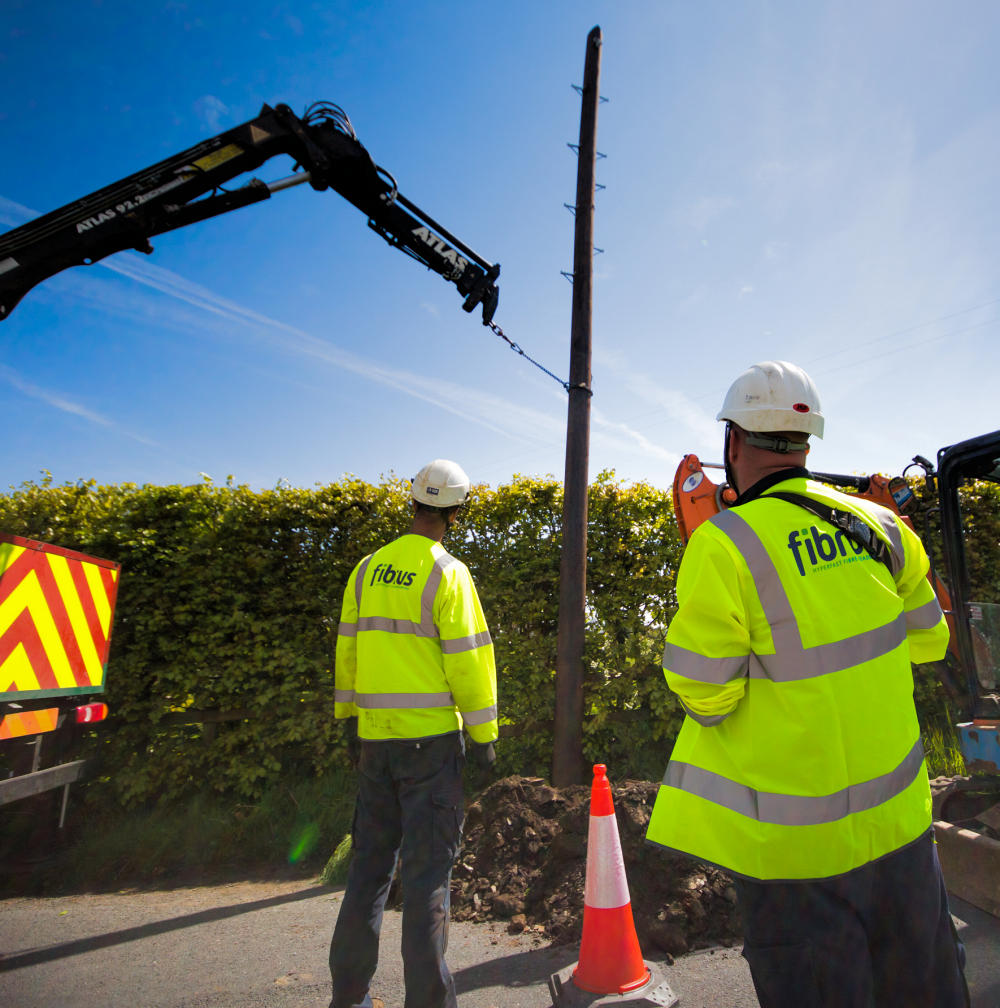























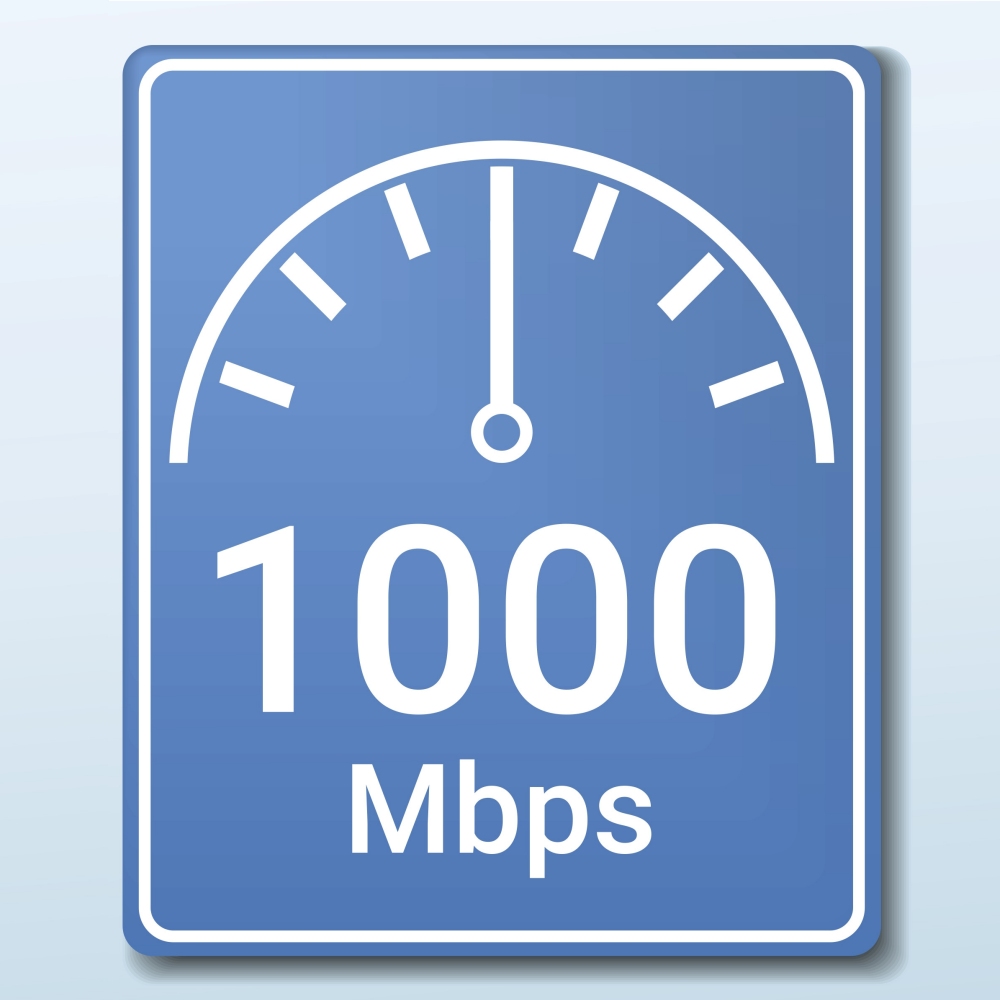
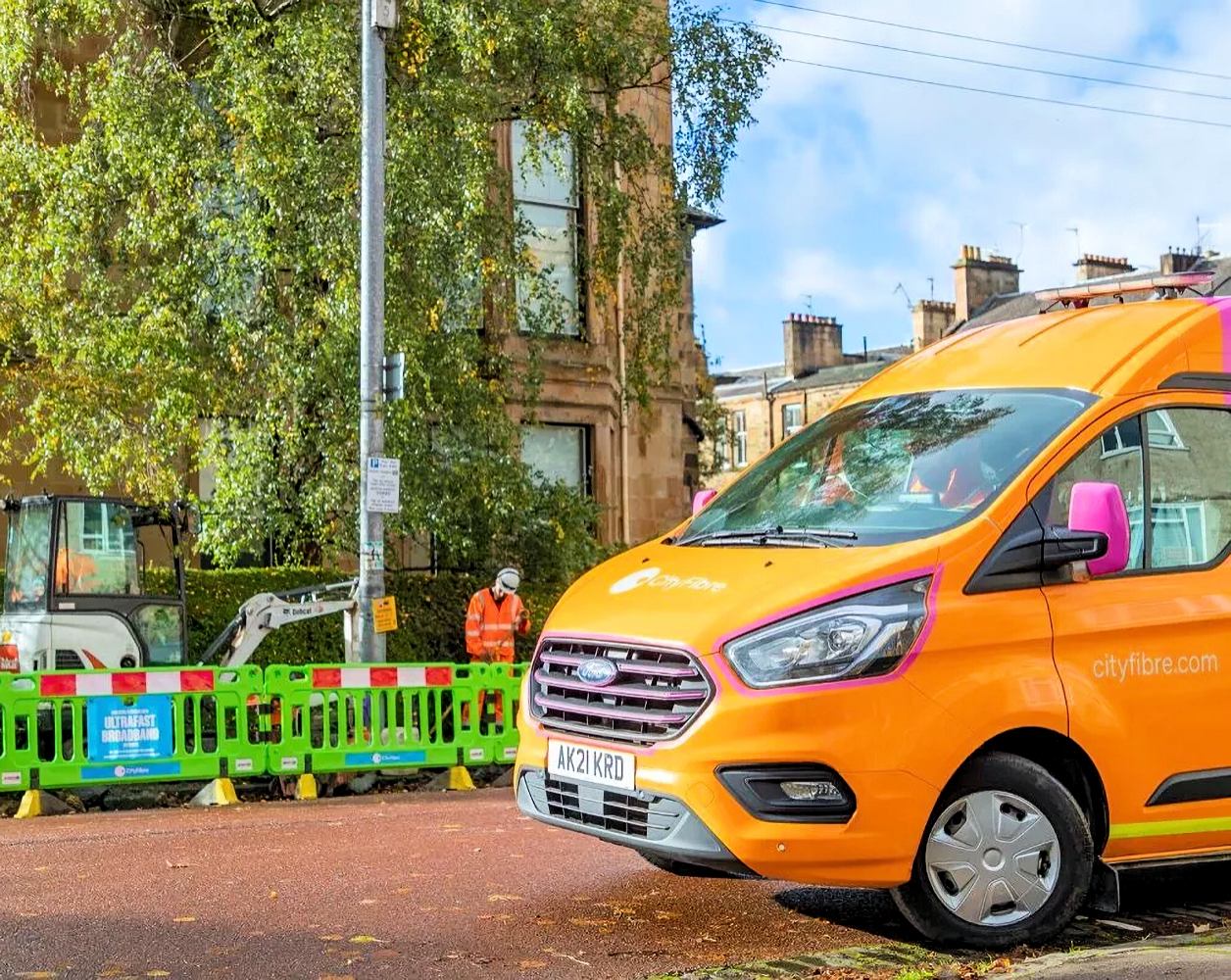





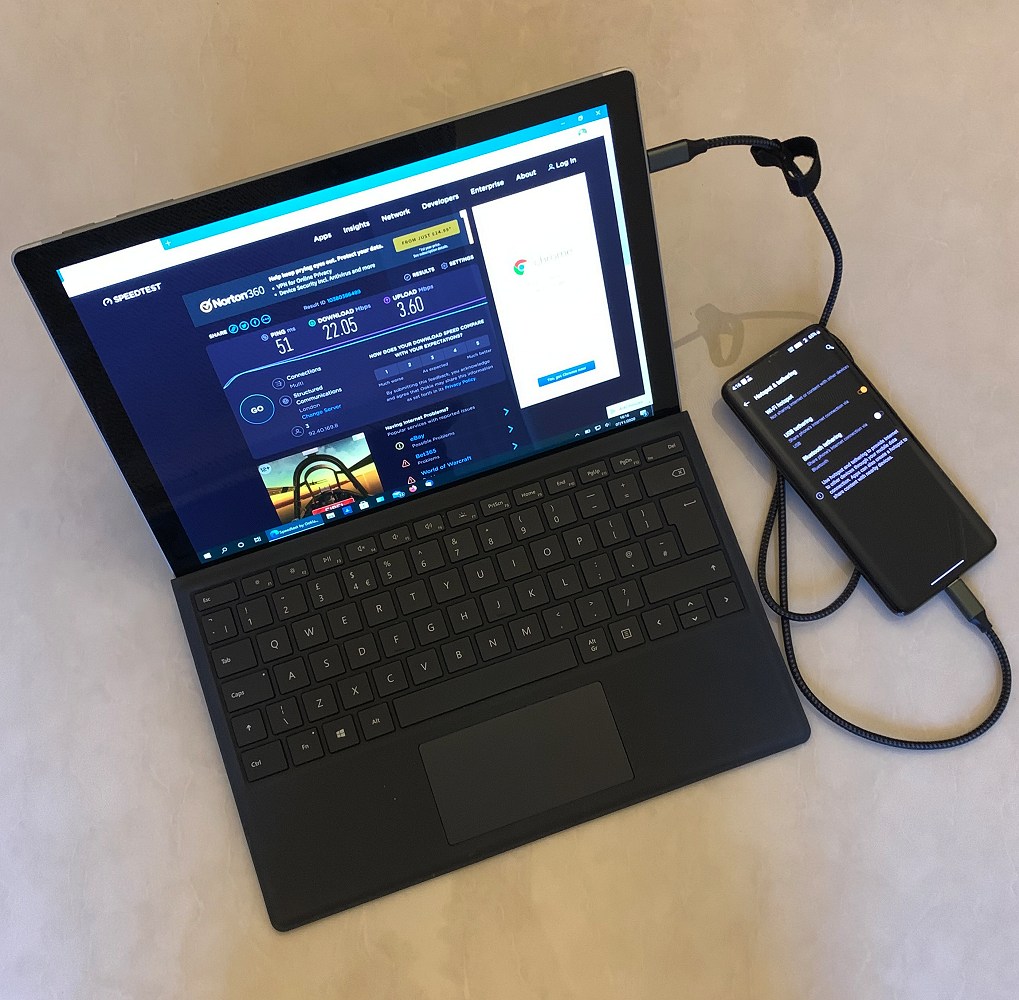


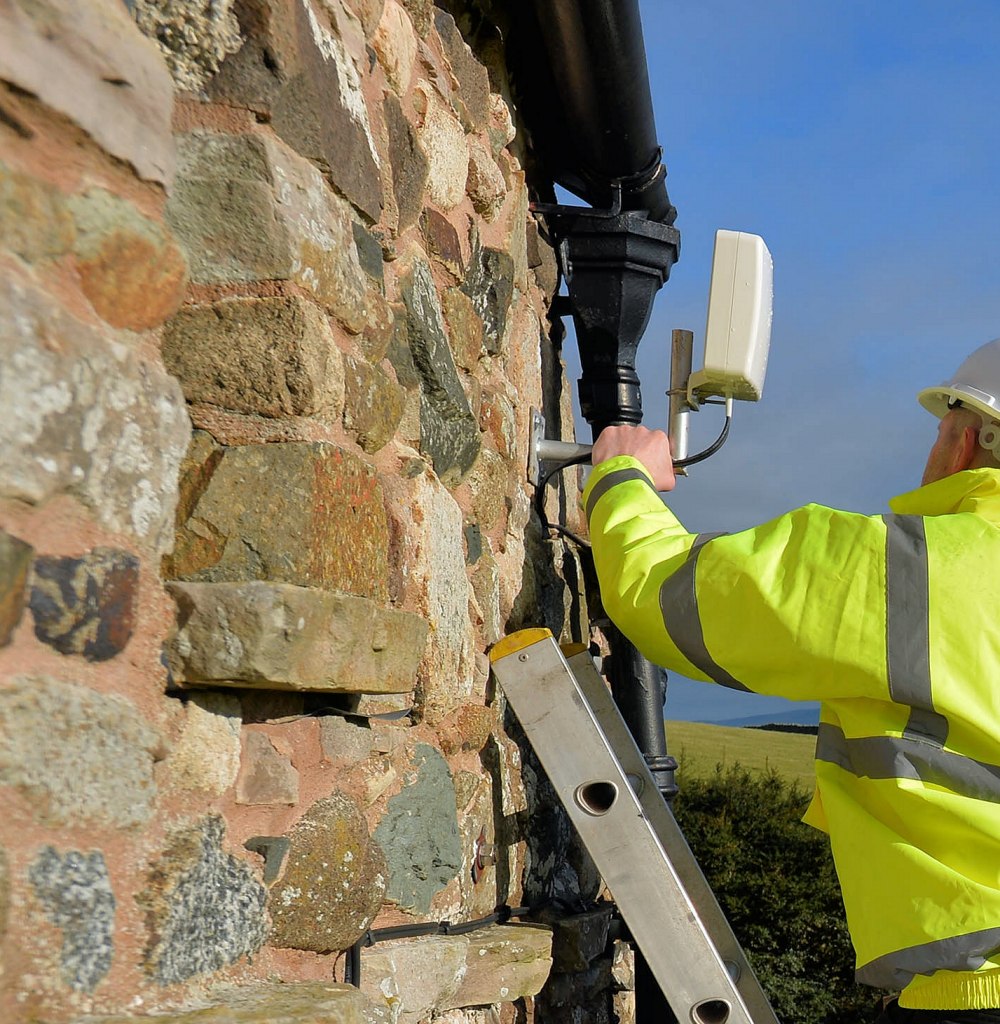







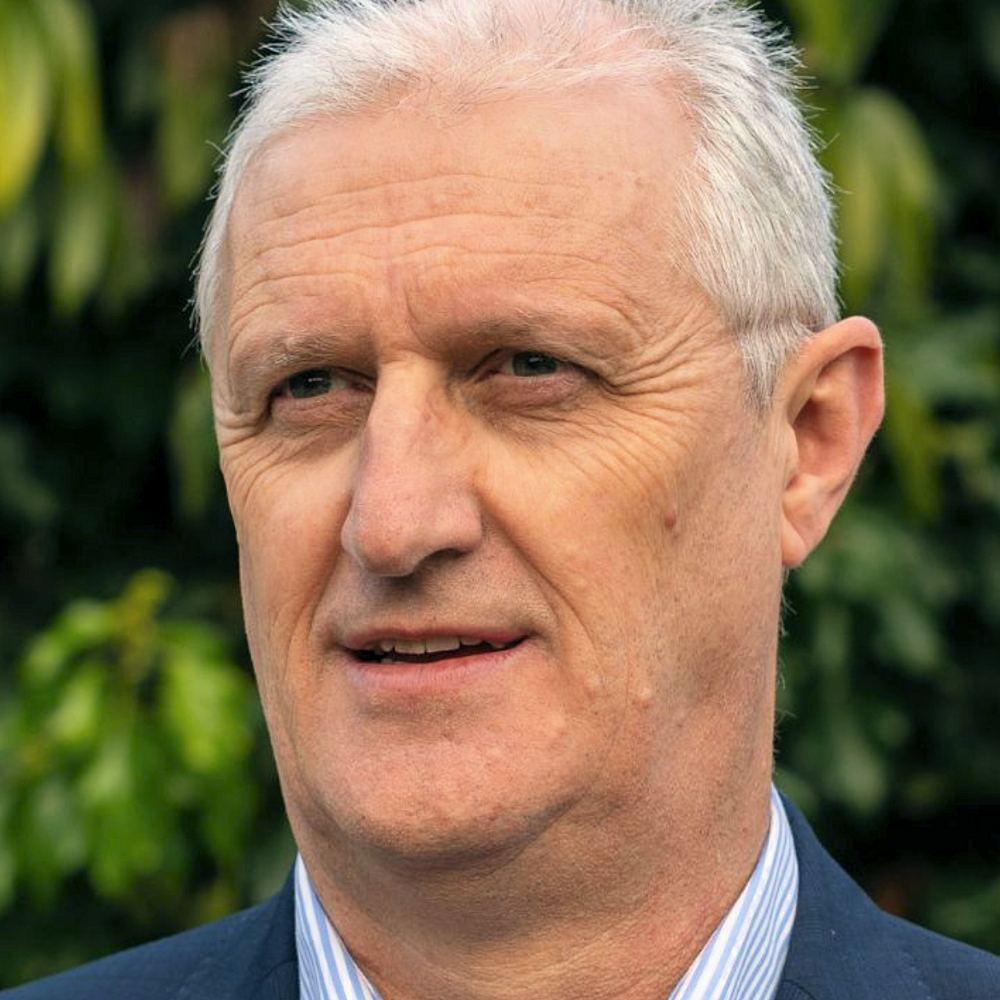

Well this is just insane. Clearly Openreach simply want to rip off people or just don’t want to build fibre that they are pricing themselves out of the market.
I think it’s time to give up on Openreach and let the altnets build gigabit Britain.
Yes give up on Openreach as there is a queue of other companies banging on the door to deliver 100% FTTP to every corner at. Healer than FTTC prices.
The article does mention Open Reach has been underestimating the true costs of Fod and that the new initiative is trying to rebalance it. Basically OR are reacting to OFCOM’s demands by fudging the pricing to make the headline look much better, but the reality is not much has changed and no one else is rushing to market.
Or perhaps laying fibre is not a cheap process? You do know that Civil works cost £1000s?
I think what is clear is that Openreach do not want a mass take up of this product.
Otherwise they would see it as a useful cash injection into a substantial FTTP rollout of their own, and charge sensible rates, which reflect the actual benefit to them over the next 20-30 years.
Rather unfair to expect an end-user to spend £30k (my quote) when Openreach will profit from that infrastructure for several decades…
@CP – Please name these companies – ‘there is a queue of other companies banging on the door to deliver 100% FTTP to every corner at lower? than FTTC prices’.
What OFCOM demands have there been for FoD pricing?
Because Openreach are always working together for the businesses, not interesting on residentials, that’s why Openreach don’t want any of you to order FTTPoD and put up rip off pricing.
@thefacts
Im quite sure they where being sarcastic.
especially if you read the 5 words before your quote.
@thefacts
what AndyC wrote, i was being sarcastic. & “. Healer ” was auto correct for lower.
OFCOM have had to go to great lengths to try and generate a market where one does not naturally exist. That in itself should be a hint as to the complexities of this. Factor in also the collapse of the independent cable companies into what is now VM and the huge debt mountain that went with it and its clearly not as strait forward as you suggest. Its expensive work, and costs more if you do it properly.
Can’t even get a quotation for FTTPoD in west Devon, BT/OR don’t offer it here at any price.
Yes. Trying to even get a quote here in the North West is impossible. Just get bounced around departments if I even get to speak to anyone.
FTTPoD is only available to those served by a FTTC cabinet. However in some cases, the BT/Openreach DSL will show no availability for FTTPoD despite the user being connected to a FTTC cab. In such a case, if you’re deadly serious about ordering then get in touch with FluidOne who being one of Openreach’s biggest biz customers, may be able to persuade Openreach to change this, subject to the infrastructure being available of course. This is what FluidOne did for me upon my initial query for a leased line.
I would disagree with the headline. FTTP can cost a lot to deploy – I agree. But when that cost is seen in context of decades of benefit, profit and lower maintenance than copper, the “reality” is different.
So if the mindset is “I want returns within 3 years” then you can say it is expensive. If you say “I want returns within 10 or more years” it is not expensive at all.
And when you factor in that you don’t waste so much energy, time and expense on temporary measures like Gfast, the calulation changes even more.
We need the government to impose measures that result in a long-term vision; only then we will see substantial progress.
Then you factor in that Openreach may only concern themselves with the incremental revenue they may get on FTTP over copper, and that they may not retire copper so have no maintenance savings.
Rather than government imposing measures I would suggest Ofcom need to stop trying to burn both ends of the candle, stop playing politics and accept that for gigabit Britain to be a success CPs and, in turn, end users, may actually have to pay for it.
Dropping their copper addiction would be a huge help too. They need to try shutting the lobbyists from Sky / TalkTalk / Vodafone out and provide the regulatory environment for Openreach to put a sunset on copper where they deliver full fibre.
The softly softly approach with OFCOM is not working…. so government legislation would be the only way.
There is no ‘softly softly’ approach. Ofcom continue to favour cheap copper over next generation networks and continue to incentivise / compel Openreach to do so.
Driving down prices of FTTC may well incentivise Openreach to sweat that investment for longer rather than replacing it and certainly incentivises CPs to petition for it to remain – people like cheap.
Refusing to allow a copper sunset reduces the incentive for Openreach to deploy FTTP.
If Ofcom actually want to adopt the ‘softly softly’ approach it’s simple. They permit Openreach to retire copper x years after they have deployed FTTP, totally and irrevocably, do not control wholesale pricing on low-end products and commit to not imposing price controls on FTTP because they feel like it for a period after it is rolled out.
@Bill, OFCOM have been signalling for some time that they want to split the access network up or hand bits over to competitors. So with that in mind, do you want to invest YOUR money or PENSION into BT so they can pass onto OR and invest in an infrastructure they may not own in a years time let alone 10 years and may never see a return on investment on?
I certainly would not and BT will struggle to find investors willing to loan them money to sink into OR if the government or OFCOM are giving heavy signals that OR’s assets will be taken away in the coming years.
At one time, FTTPoD gave those too far away from an FTTC cabinet some hope but that is no longer the case. I get it that FTTPoD is expensive but this feels more like a political move to further justify the G.FAST strategy and yet again its those of us on long lines that lose.
Individual builds of FTTP are expensive. It’s doesn’t matter if it’s with Openreach, Virgin Media, Hyperoptic, Gigaclear etc.
The pricing is transparent as everything is based of Openreach’s service pricing – https://www.openreach.co.uk/orpg/home/products/pricing/loadProductPriceDetails.do?data=pAWshrQ7XRSLb9S%2BW8IAk0G8vUtdrlJTUevDC2QqJZ8lMnGHsqdC0vzO163bJmh34D91D7M0q8u%2FIlSgtIFAKw%3D%3D
I’ve seen completed costs of close on 10k for short (200-300yrds) deployments to single dwellings. So its just not cheap. That said I do think BT/OR could come up with a better way to help organise groups of properties to make join applications. Perhaps wave the survey fee for more than ‘X’ properties
It looks like the linked order process isn’t going to work. Cerberus are charging £495+VAT as the setup fee for each linked order; and those customers will also have to take a £100+VAT contract for 12 months (double a regular FTTP ISP, and 60% more than Cerberus’ own FTTP Pro 330/30 service). This more than wipes out the £700+VAT discount on the original order. It also adds huge risk, because if any linked order is cancelled, the whole order is cancelled but the full install charge remains payable.
I also think Openreach is missing a huge trick here. For example: a band G property is 1500-2000m radially from the fibre aggregation node; and yet they will only make 14 properties active on FTTP as part of the FTTPoD build. If they were to put a fibre breakout at the end of every street they pass, they could activate hundreds of homes as part of the build. That is: they could use FTTPoD as a springboard to deliver the full-fibre rollout they claim they want, with most of the cost subsidised by the early adopter.
A single FoD order really wouldn’t offer much subsidy if every street passed by the fibre were to have a ‘fibre breakout’ installed. The most costly part of the deployment getting to the distribution points then the delivery to homes. That’s where the ducts are most degraded and there’s the most need to use multiple poles to get to each location.
Just consider the lengths of the fibre routes. A 2km run down some roads to get to a street is likely to be done along a single duct or pole route and will take the most direct route. Aggregation nodes will be on main roads almost exclusively where they can most efficiently pick up feeds from a number of smaller side streets’ cabinets.
A ‘fibre break out’ isn’t really that useful. Each fibre is only serving 32 premises from what I recall of Openreach designs, so rather than having a fibre going to the FoD subscriber down a single duct to put ‘break outs’ in requires extra fibres that are nothing to do with the FoD order going into splitters that are nothing to do with the FoD order that, to pass all premises need to have fibre runs of their own into chambers on streets that are nothing to do with the original FoD order serving secondary splitters that are nothing to do with the original FoD order.
You very rapidly end up using more equipment and civils work to pass properties nothing to do with the original subscriber than their order, bumping up the costs, and if you just place splitters all over the place that still increases the costs of the FoD build considerably while doing relatively little to serve the additional premises.
This is kinda why many PCPs are on street corners where those streets join larger roads and the same logic applies. The final run is by far the most expensive expressed in terms of cost per route metre per premises passed.
The only real bonus is that the duct route has been proven out and any blockages have to be fixed to deliver the FoD order, which is nice.
This version of FoD is not being offered for individual users, especially residential, to take up. It’s there to permit service providers to migrate a group of users to FTTP. If individual users want to pursue it so be it but it’s not the intention at all.
This is not a retail product, just as everything else Openreach offer is not a retail product, it is a wholesale one.
How on Earth will this help service providers migrate a “group of users?”
Unless everyone in the group uses that same service provider… hardly likely.
Indeed Carl, its clear Openreach are now trying to encourage mass (linked) FTTPoD orders rather than lone orders. I got the service installed under the old pricing (3.7k), I imagine my install costs under the new pricing would have been ~15k.
You’re right. I should have used the phrase ‘communications provider’ to make it clearer that Openreach sell to BT Wholesale who in turn sell to hundreds of service providers increasing the catchment.
Nothing stopping Sky, TalkTalk or Vodafone from joining in the party beyond that they really like sweating their copper termination kit.
Zero reason why the CPs can’t co-operate on FoD orders between themselves either. Either way that was the plan – the ‘linked orders’ discount isn’t in there for fun and requires a group of people on the same CP, wanting to move to the same CP, or an agreement between CPs to make it happen.
Oh dear, if what you say is true, it would appear that those who claimed FOD was dead were right. Although many BT supporters on this forum have been arguing otherwise and even mocking the suggestion that FOD was dead…
The original FOD was aimed at end-users, but you are saying the new one isn’t?
Sounds like we have moved backwards.
Won’t 5G replace cables to the premises?
Hopefully.
Never.
You can saturate 5g bandwidth locally too easily. Even assuming it works which frankly in many places is (and will continue to be) pretty hit and miss
Next year when 5G Mobile Network UK has launch, million of peoples will dumped BT line rental & FTTC switching to 5G Mobile Ultrafast Broadband and Openreach will lose lots of money & profit.
Also what has happen to FTTPoD2?
Hi adslmax 🙂
So how much did Cerberus quote you for FTTPoD?
As will Virgin Media etc?
Really? Millions of people? And pray do tell how these millions of people will actually be able to get stable 5G signals capable of giving you 500mbps to 1GB sustained speeds?
It’s a joke that we have 5G, when in this century and year we STILL do not have anywhere near full coverage of even 3G or 2G in the UK. You still have to choose a provider based on the signal you can get as opposed to who’s better value.
@Mark
“You still have to choose a provider based on the signal you can get as opposed to who’s better value.”
Isn’t that true of most things? My nearest Waitrose Aldi and Lidl is a few towns away, our town has Asda and Iceland, who can I complain to to get a better quality supermarket than the current offerings?
hi baby_frogmella Cerberus FTTPoD is £39K but my bt checker now appear to show up G.Fast estimated speed of 246 down and 35 up but it say planned g.fast for now.
That’s great news wrt G.fast. Hopefully you should be able to order it soon.
Having had the benefit of GFast since early January 18 it won’t be that fast.
On an ideal line of less than 150m I get 292/48.5
It is very stable and that is a real speed for FTP etc not just a SpeedTest headline number.
Don’t get me wrong it is way faster and lower latency than FTTC but FTTP it is not.
@A_B – ‘Don’t get me wrong it is way faster and lower latency than FTTC but FTTP it is not.’ Your point is?
What exactly is the problem? 292 Mbps!? Who on earth needs that kind of speed in family home?
@ baby_frogmella Here is my BTw checker showed g.fast as planned. https://postimg.org/image/u03rixn5h/
I recently put in for a quote under the new system. Given i’m 550m from the nearest cabinet, and around 700m from the exchange itself I wasn’t expecting to pay a fortune.
Unfortunately, the quote came back as £39,000 *plus* VAT. This came as a really big suprise to me, especially as prices quoted in this article and the comments are far lower – I seem to be right at the upper end of the quote despite my proximity to existing infrastructure! Apparently my install would pass 14 other properties, but even then a £700 discount for each of those barely reduces the costs.
Ultimately, it’s a bit of a shame that FTTPoD is so expensive. Although I do receive FTTC, I would be more than happy to pay costs in the “thousands” range in order to get a full-fibre solution built out to me and enable higher speeds, especially on the upstream.
One silver lining is that since I put in a request for a FTTPoD quote, thanks to the friendly folks over on the Kitz forum, i’ve been able to boost my FTTC line to a full 80/20 sync. I’d still definitely prefer higher and would be willing to pay a reasonable amount for it, but I am glad that I am at least not stuck on abysmally low speeds like some others are.
King, do you control the land the route crosses or have a friendly farmer? When I was getting my fttp I considered digging and trenching my own route (if they had asked me to pay). As a very high proportion of the cost is civil works and their contractors cost far more than getting a farmer to do it you might have some riggle room there.
@KingJ How many customers for £39,000? Is this pre-survey?
@Joe Alas I don’t have control over the land. The exchange is located in the town center, and from there to me is all road. The surrounding land is either Network Rail owned or water!
@NGA for all – This would pass just 14 other properties apparently, which surprises me a little. It is indeed a pre-survey. Over on the linked TBB thread, there’s a fair amount of speculation that those who are receiving £39,000 quotes are receiving them either as a disincentive to order, or more likely because Openreach don’t know enough about the area to provide a proper quote and so max it out just in case.
I could go for the £250ish full survey which would give me more certainty over the cost, but it’s quite a gamble given the *possible* £39,000 quote so far.
@KingJ That is consistent with the £3k per property pre-survey costs I have seen. Post survey rural is dropping to £800-£1,200; and I seen as low as £400 per property in Devon. I have seen a single outlier at £17k but that was with another supplier.
I am convinced this is a resource issue. I am not sure how they organise efficiently for what are post cabinet installs.
OR could do worse than publish what they might expect in a survey. £250 feels like record checking to find an AGN and adjacent chamber, a bit of google maps and perhaps a quick check on the condition of the poles. The CBP folk cannot travel to every meeting.
I sure that infor could be gathered by those wishing the work to be done.
the distance the cab is a complete irrelevance in FOD provision and also in FTTP provisdion its the distance back to the nearest aggregation node when the fibre can — the FOD order will not use any of the fibre provided for the Cab which will either have been provided as part of commercial programme or other programme so you could be 500 metre form the cab and 4km from the Aggegation node
@Fastman, the decision to use the AGN, as opposed to using any spare fibre from the cab is a planning decision which could be reviewed should OR choose too. It makes a mockery of FoD ready if this was planned as part of the BDUK activity. It means the plan, despite the money available and remains available was to exclude those beyond the cabinet.
@NGA – fibre terminates at a FTTC cabinet, it splits from the bundle at an Agg node. to build a new FOD circuit you need to split out, requiring an Agg node which could serve several cabinets.
@Gadget, on OR fibre diagrams, many cabs are served by COF205 cables with a good fibre count. If that was not going to be used, you could have laid a second cable at virtually no cost to BDUK at the same time.
Either way even overlaying a cable from the AGN is not an onerous or expensive task.
BT is sitting on a further £397m of clawback, and their a £1bn BDUK pipeline, with more funds unreported in LA investment accounts.
It is a matter of use or lose the funds. BT should be reporting its true up payments to LA’s. These funds are for rural connectivity.
Are cabinets served by a COF-205 or a blown fibre tube carrying a blown fibre unit with maximum fibre count 4?
I’ve seen a fibre blow to a cabinet. Definitely wasn’t a high fibre count cable it came out of. Higher fibre count cabling requires larger sub-ducts which in turn obviously require more free space in the duct they are riding in. A pointless exercise when a BFT has more than enough fibre capacity even for a Huawei 384.
@CarlT – it is possible you tubing from TiJ to Cab, and the TiJ is served by CoF205.
The high fibre count was for the purpose of extending it.
So… We don’t know the details, don’t have all the knowledge or experience, but…
No idea what a TiJ is to be honest.
The article doesn’t mention another issue with the quotes – the passed premises are not identified so there is no way of knowing which neighbours you could approach to create a linked order. More details need to be provided as part of the initial estimate.
Your right. The initial guess of £3k a premise seems to be to put people off. The payment of a planning fee should result in an itemisation of costs, including the identification of the AGN/ splice point and diagram of the network, splitters and any secondary splitters.
@NGA
Of course the price would have to be inflated in order to recover the cost of doing this, including for the people that don’t subsequently proceed to place an order. That is assuming that the participating service providers agree with you that they require this level of documentation for their customers.
I have had a quote of £6000 +VAT, it passes 14 properties and is 400m metres from the nearest point. I was hoping for a lot less, the above price I can’t justify the install.
Is this the gap needed? Are you in a BDUK area? There are several places Oxfordshire, Worcestershire, Staffordshire, where BT, LA and customer funding is covering this off. Getting covered under state aid scheme means the costs are monitored and likely to be lower when billed.
I am in no area where i can get funding.
Can you all,really,be missing the point that BT/Openreach is a USP and near monopoly owner of land lines?
Surely they would like to preserve this situation.
All government have to do is present them with a target,like 6gb or whatever everywhere,at all times and in all weathers.I ,say,three years.
This is enough for normal requirements,people who require more speed are either businesses or people with too much spare time and too much spare money,they can be charged whatever.
The present situation is a scandal,BT has had over a decade to fix this and is nowhere near what should have been done many years ago.
So,tell me,actually and really,what I am missing from this analysis.
R
Not a near monopoly any more.
hhhhmmmm interesting view of world one that totally divorced of reality and economics really
Not surprised one bit by this, Sky were looking into doing their very own FTTP service and even CABs etc, but unsurprisingly ditched it as soon as they looked into the ACTUAL costs involved!
Of course it won’t be cheap to do this, everyone would be if it was. It’s like having a water or gas pipe laid to your house of reasonable distance.
At the end of the day if you don’t like the charges you can complain to Open Reach, or your local MP, neither of which will particularly care.
Properties Past:
Mine was the 2K before to 10K after quote in Merseyside. BT apparently would pass 5 properties as part of my build. Which is the number of houses connected to my telegraph pole. The fact that they have to pass 4 other poles no matter which way then run the cable to my house (either from a cab or from the exchange) seems to have passed them by. If BT had actually have wanted to enable my street for FTTP as they know there is a demand for it they could do and that would have saved me a bit of cash. But BT would rather do the bare minimum so as not to spread the costs.
Further to this – where I used to live (6 months ago) was a MDU of 130 properties plagued with problems on phone and broadband. BT constantly being asked to fix problems with phone line and broadband BT insisted there was ‘no demand’ for decent/fibre broadband down there. 3 months after Hyperoptic started their build, lo and behold there is a BT FTTP service installed (yes completely installed) and available to order.
BT are simply looking to maximise their profits and the reason they have upped the price of the FTTPoD is to hoover up the next round of government funding of Gigabit vouchers.
If they’d just tell us upfront *where* the aggregation nodes were to begin with, it might save end users a good deal of time wondering if it was worth ordering.
I think Openreach wouldn’t allow this. Due to security reason protected against theives.
I just want to add my bit to the story… We were planning to move from a leased line (300Mb) to FTTPoD this would reduce our costs a lot based on the new prices ( we are out of contract for leased line now).. at least that what we hoped for before I received a quote today for over £4K in estimated ECC. Can anyone explain me why we have paid £1,874.60 +VAT in ECC charges (3 years ago) for the installation of the leased line and for the same address build cost for a FTTPoD is quoted 4K +VAT ??
there a number of reason the fibre for your leased line might got back to a completedly different exchange to the Fod order might go back to you might have had a much smaller fibre bundle that the Fod order needs so there a number of things that might need doing ythadid not need doing on your leased line (what sort of leased line was it and at what bandwidth at – interested its estimated ECC’s so assume not been surveyed
Just to add my experiences, I had a quote from Cerberus last year for £2k install (BandB) and then £165 a month (plus a £60 surchage because my exchange was Band A)
I held off only because of the £60 surcharge given that my exchange now as 3 LLU providers in it and I was awaiting Ofcom updating the category.
Now SERIOUSLY regretting that decision, I’ve just had a new quote back from Cerberus and its £21500 install (oh and they’re still saying £60 surcharge for Market A as it doesn’t look like Ofcom have updated the exchange data)
I’m tempted to drop £250 on the full survey just to see if that makes any difference, I’ve never quite managed to work out where the agg. nodes that they connect back to are, presumably they are located somewhere in the street to serve the cabs, I know they’re not at every cab but if you have cabs that are connected up in a ring rather than a spur there should be a node near them?
We’re on “main” the road between 2 FTTC cabs, and I know that at least the TalkTalk Business fibre runs past our front door and serves the school and factory 100yds up the road, I really can’t quite understand how our install can be so high, we should be on of the cheaper end of the scale.
Oh well time to go back to looking at bonding a 2nd FTTC line I guess, the only other hope is the factory site is being redeveloped with 100 new houses so maybe something will happen there in regards to FTTP and that might bring our price down.
To add my experience, old quote of 5.5k install, quote on new pricing is 39k. Gutted!
Exactly the same scenario as myself. Moving to a new area and got a £6.6k install quote in January, new pricing install is £39k :-O Now trying the community approach as it “passes 10 houses” and after some local enquiries, looks like there is a lot of history and a number of people interested in FTTPoD so fingers crossed! Least its one way to break the ice and meet the new neighbours! 🙂
Suddenly now my install quote doesn’t seem too bad. They quoted me £3,150 for installation and £750 connection.
But the kicker was the particular company wanted me to buy an £800 router that I don’t need (use pfSense already) and the monthly cost was £320. So in the first year, it would have cost me £8150. Needless to say I didn’t go for it ….
My experience is slightly different. I had a quote from Cerberus before the new FTTPoD price change and have just ordered the line under the new pricing structure. My house is 750m from the exchange.
Under the old pricing I was quoted £2000+VAT build cost but had to commit to a 36 month contract at £165 per month.
I got a desk based survey after the price change and the estimate was £11,500+ VAT build cost. I paid the £250+VAT for full survey and the actual build cost has come down to £4,250+VAT, however the monthly charge is just £120 per month for just 12 months and then goes onto normal fttp pricing structures.
Before total cost for 36 months would have been 36 x 165 + 2000 = £10,280.
I’m told that I only have to contract for 12 months on FTTPoD rates and then the line is charged at normal FTTP rates. As such my new costs are 4,250 + 12 x 120 + 3 x 54 + 23 x 75 = 7577 over the 36 months.